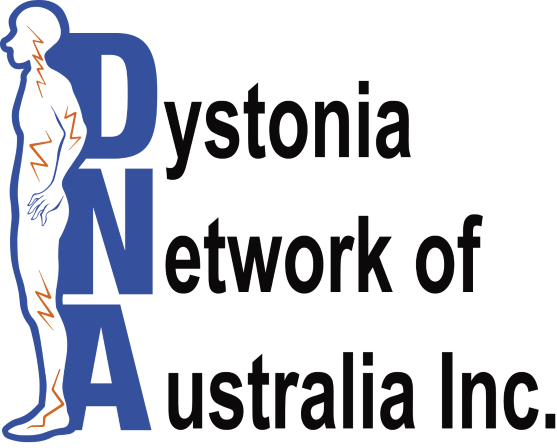History
Although originally manufactured and stored as a chemical weapon in the Second World War (but never used) Botulinum toxin A was first used successfully in a purified form and in very small doses by an American ophthalmologist. He injected the appropriate eye muscles to treat strabismus (squint or misalignment of the eyes), in children in the late 1960’s.
In the late 1980’s it was trialled for cervical dystonia (neck dystonia) and has been used since for many types of dystonia such as writer’s or musician’s cramp (forearm/hand dystonia), blepharospasm (eyelid dystonia), spasmodic dysphonia (laryngeal dystonia affecting the voice) and leg or spinal dystonia as well as many other dystonia and non-dystonia conditions. This treatment has been used successfully and safely worldwide for many years and has the most success in reducing symptoms and pain especially in focal dystonias.
Action
Botulinum toxin A is one of 7 neurotoxins secreted by the bacterium, clostridium botulinum, which in large doses causes a type of food poisoning called botulism. People who have this infection can go on to have a severe, generalised paralysis. Generally botulism is caused by contaminated canned food.
When small doses called mouse units are injected into a muscle affected by dystonia, the toxin interferes with the nerve supply to the muscle. The muscle is then weakened, reducing the overactivity in the dystonic muscle. For example, injecting a neck muscle which causes the neck to turn to the right will weaken the effect of this muscle and the turn to the right can be reduced. The toxin takes effect in days to two weeks depending on the muscles injected with the small eyelid muscles gaining benefit often within 48 hours but larger muscles taking longer. The effect usually lasts from 3-4 months but may give benefit for longer in some people.
Method
Botulinum toxin A has to be given in the form of injections and the injections are delivered by a specialist who has had training in botulinum toxin. It is usually a specialist neurologist (or training neurologist under the supervision of the specialist) who gives the injections but this can also be an ophthalmologist (eye doctor) for blepharospasm (eyelid dystonia) or an ear, nose and throat (ENT) specialist for spasmodic dysphonia (dystonia of the vocal chords). It may be injected under the guidance of electromyography (EMG), where a special needle is inserted into the muscle and its activity displayed on a screen. Through the same needle the muscle is injected with toxin if dystonic activity is seen. EMG is not required for all types of dystonia. When the eyelids are injected for blepharospasm, for instance, EMG is rarely used and small diameter needles are most often chosen.
Treatment
When treatment begins it might take a few visits to the specialist neurologist before a good effect is achieved. The degree of success of the treatment varies among individuals, in the types of dystonia they experience and the muscles responsible for the dystonia. Injections need to be repeated every three to four months as the effect of the toxin wears off.
Allergy to botulinum toxin is rare. General side effects include pain, swelling, bruising at the injection site or excessive weakness of a muscle. Some side effects are particular to the site of the injections – such as drooping of an eyelid (ptosis) when injecting for blepharospasm or swallowing difficulties when injecting the neck muscles in cervical dystonia. All of the side effects are temporary and many people do not report any side effects.
A small percentage of people may develop antibodies to the toxin, which means that they build up an immunity that prevents benefit from treatment. This can happen spontaneously or as a result of very high doses or using booster doses frequently. If immunity to the toxin is suspected the injecting doctor may inject the main muscle of the brow (frontalis) on one side only, and check the effect of the injection usually in one month. If the toxin is still working then the brow on the side of the injection will be smooth. However, if there has been no effect the specialist will discuss the high probability of immunity with the person. There is another muscle on the foot that can also be used and EMG employed a month after injection to check if the toxin has been effective. There have been cases where people diagnosed with immunity to the toxin have received injections again after some time and have again received benefit.
Types of botulinum toxin
Botulinum toxin A, as the most effective of the neurotoxins from clostridium botulinum, is currently marketed in three brands in Australia, Botox®, Dysport® and the newly introduced Xeomin®. Dosages between the brands vary. Another toxin from the same bacterium has been trialled, botulinum toxin B as Neurobloc® or Myobloc®, but its effect does not tend to last as long as A. It is generally used in cases of immunity to botulinum toxin A. There have also been small trials of botulinum toxin C and F but the results show their effect was of shorter duration than B.
St Vincent’s Hospital, Sydney – Articles
20 Years of Voice (published 2001)
Botulinum Toxin Therapy at St Vincent’s Hospital in the year 2000
With permission of Dr Paul Darveniza, Dr Stephen Tisch & Mr Greg Partington
Page reviewed 31 January 2024




